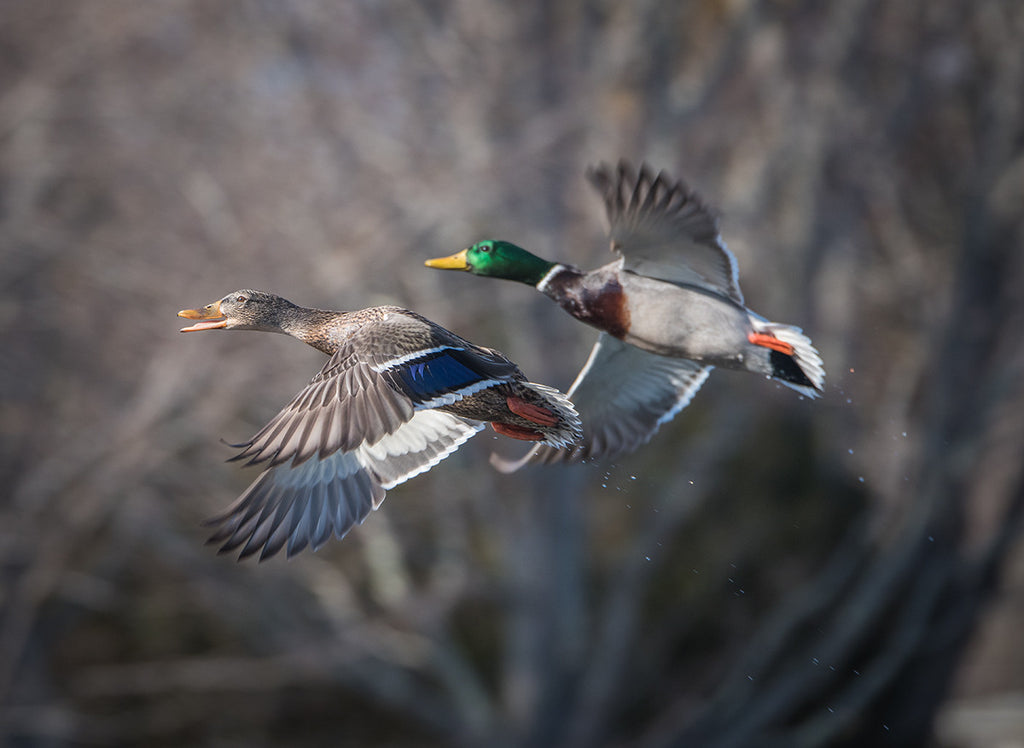I walked through a cemetery on a day which was neither spring nor winter, when I was neither young nor old. It was a time of in betweens all around, with bright sun and a biting, north breeze and me falling smack in the middle of the born-on died-on dates carved into the granite and marble. Geese passed fast overhead with no regard to direction, carried on the wind as though they, too, were undecided about where they should be going this time of year. There were narrow roads through the stones, covered in places with clean, crushed rock, holding mud puddles skimmed with ice in others, tire tracks nearly lost to grass in still more. I avoided them because it is my nature to, whenever I can, favor my own path over a road no matter how little traveled it may be. I carried my camera, searching for spring and new life in a most unlikely place.
But I’ve always liked cemeteries. Not because I have ever felt any macabre fascination with them or my pulse quicken with thoughts of spirits, but because they are, for lack of better words, quiet and peaceful. Meandering through the memorials, taking a leisurely, circuitous route governed only by the chirp of birds or an interesting stone I wanted a better look at, I remembered driving my grandfather’s lawn tractor through the cemetery just up the road from his house in Central New York when I was young enough to sit on his lap and steer while he ran the gas. There were hills in that cemetery, graves carved into rough, glacial soil whose relief would not yield to any sort of leveling, forcing stones to stand in terraced rises and providing us with raceways to come down pell-mell on the lawn tractor. The wonder is that we didn’t tip over I thought, and with that realization I was reminded that those times were decades behind me. Hell, all I wanted then was steeper hills and more speed.
What do I want forty years later, I asked myself staring at stones nestled close together – father, mother, son and daughter – lost to a diphtheria outbreak a hundred and fifty years ago? Well, more time than these folks had, I suppose. A cloud passed in front of the sun and the wind picked up as if by way of some very noncommittal and not at all reassuring reply. I stepped carefully over a mossy chunk of granite sunk nearly level to the ground, its one word inscription of “Baby” just visible under the green lichen. I wondered if something as simple as penicillin could have rewritten that word on the grave? Provided a name and dates and a great many years between? I thought about taking a picture; angles and exposures and backgrounds flashing through my head, but I decided against it. Spring, by God! That’s what I was here for, and as the sun reappeared I welcomed the squabble of mallards from a nearby pond. I’d had enough of silence for the time being.
The ducks didn’t want to fly very badly but had grown wild enough over the winter when not many people visit to hurl themselves skyward with a little encouragement. I had the sun at my back and followed a pair with my zoom, snapping pictures in rapid succession, pleased to see that I had the hen in perfect, down-wing focus. I watched the flock swirl together out over a larger, mostly-open body of water, their calls growing faint, their bodies losing definition until they were dots on the horizon and it was again quiet.
The great blue heron had wedged himself under a spruce tree across the little pond from me, standing statue-still even when the ducks had flushed. I couldn’t decide if he was an early spring arrival or had weathered out the winter, but when I approached him and he didn’t follow me with his large, yellow eyes, I decided that his days of going south were behind him. He looked tired and old, his feathers without the sheen of youth, his long bill striated with surface cracks. From twenty-five feet, he heard my shutter and begrudgingly flapped into the air, landed a few feet inland where he looked out of place and puzzled, then took flight again, low and slow through the cemetery stones. I had an interesting picture, but I wished that I hadn’t disturbed him.

I walked north, into the wind and the scent of dirt freed from snow. It brought memories of tin sap buckets I hung on sugar maples as a boy and the way our kitchen’s wallpaper peeled when my mother boiled their contents down to syrup on our cook stove. Another memory from a long time ago. I sat on a wrought iron bench that faced a fifteen-foot-tall polished obelisk overrun by vines, but in a stately sort of way. The inscription underneath told the brief history of a man who’d pioneered a ship-building operation. Seemed like a great accomplishment, I thought, as worthy as any of such a monument. I stared at my camera and smiled. No ship building for me. Or for that matter, much of anything else that could possibly translate to a tall, glossy memorial. Comes with the territory of avoiding all roads I told myself.
This time, memories were more recent. A one-way trip from New England to the Rocky Mountains in a beat-up Ford car. The rumble of a fresh-started chain saw and the smell of pitch-stained hands. The way a hungry brook trout will take a fly from the surface of a June beaver pond in a furious swirl which cloaks his true, often diminutive size. Acceptance letters to law schools and their eventual use as kindling in a homemade barrel stove on winter mornings when the temperature in Butte, Montana, hovered at forty below zero. The bugle of elk, the tracks of mountain lions, the electric pulse of a huge steelhead well-hooked in heavy water. Stories and photos and more of both. I looked at the obelisk, then at a barely discernible path – little more than where a dozen vehicles drive a year – then rose and turned my back on both, continuing north through the cemetery.
Clusters of small flags marked Civil War graves, reminding visitors that this country had once gutted itself. I thought of my niece and nephew, born to a Vermont mother and Georgia father, then looked at the stones again. 1863. 1863. 1863. Growing pains, but not the kind we need ever repeat. In the distance, I could see the end of all graves not far from a chain link fence beyond which the living drove and played and shopped and slept. I was coming to the end of my walk, an unsettling feeling that I was a tiny bit closer to the ending dates on these stones than I was when I’d begun. And I still hadn’t found any conclusive evidence of spring.
This was the oldest part of the cemetery. Where people had gathered to grieve and inter their loved ones nearly two hundred years ago. The stones were slate, flat and leaning with flowing, calligraphy done by hand with pride – wreathes of leaves encircling a font similar to that on the early large cent coins I’d occasionally dug from the ground as a boy in Northern Vermont. I read some, and let my eyes move over others without really noticing what was written. It was time to head back, and partly because I didn’t want to pass the Civil War stones again and partly because even a single set of footprints was more road than I wanted to retrace, I chose a slightly different route, walking faster than I had since arriving.
And then, a sprig of color. A flash of blue deeper even than the sky. A male bluebird landed on a grave close by, fixed me with his eye and tipped his chin as if to say, “Go ahead, I’ll pose.” He sat for a picture on a marble stone above the simple, dateless epitaph, “Carla – Loving Wife,” as though she was not bound by time but immortal through who she’d been. I took a picture. The day felt warmer. The breeze slowed. The bluebird flew, straight up and quickly. A soul, a littler lighter. Perhaps.





Annie
This is perfect. ❤️